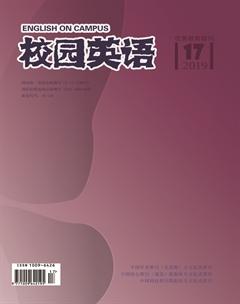Study on the Phenomena of Non-fluent Repetition in Chinese English Learners’ Prepared Oral English Output
【Abstract】 This study focuses on the phenomena of non-fluent repetition in Chinese English learners prepared oral English output, exploring the characteristics and practical functions of non-fluent repetitive phenomena in prepared speech output, which provides a reference for the study of non-fluent repetitive phenomena in the future.
【Key Words】 Non-fluent repetition; prepared speech output; practical functions
【作者简介】肖子烨(1998.07-),女,汉族,湖北荆门人,华中师范大学外国语学院本科生。
1. Introduction
Non-fluent repetition is defined from the listeners perception as “an incomplete string of the same syllables, words and so on, which was outputted successively, giving the listeners the impression of hesitation; there may be silent pauses, non-lexical or lexical fillers between repeated parts.” (馬冬梅,2013) At present, the studies of non-fluent repetition mainly focus on the subjects impromptu oral output as conversation and unprepared speech, but very few involving prepared spoken output. In view of that, this study takes the prepared spoken English output of Chinese English learners for example to explore the characteristics and practical functions of non-fluent repetition of L2.
2. Research process
2.1 Research subject
There are 24 subjects in this study, including 23 females and 1 male. All of them are in English major. Their ages vary from 19 to 21.
2.2 Data collection and analysis
This study takes materials from the prepared presentations, recorded by recording app. Date analysis is divided into three steps. First, transcribe and check the recording materials. Then mark the repetition parts. Finally, do statistical analysis of data and interview the subjects.
3. Research results
3.1 Non-fluent repetition frequency
According to data, the total quantity of spoken output words is 34,710, and non-fluent repetition accounts for 1.76%. The total quantity of prospective repetition accounts for 1.45%, while retrospective repetition accounts for 0.31%. The proportion of prospective repetition is significantly more than the retrospective repetitions.
3.2 The practical functions of non-fluent repetition
According to Hieke(1981), the functions of repetition are distinguished into prospective repetition and retrospective repetition. Prospective repetition is predictive and focuses on the unspoken words. Retrospective repetition is monitoring the spoken words. These two categories exist in the speech output and carry different practical functions.

